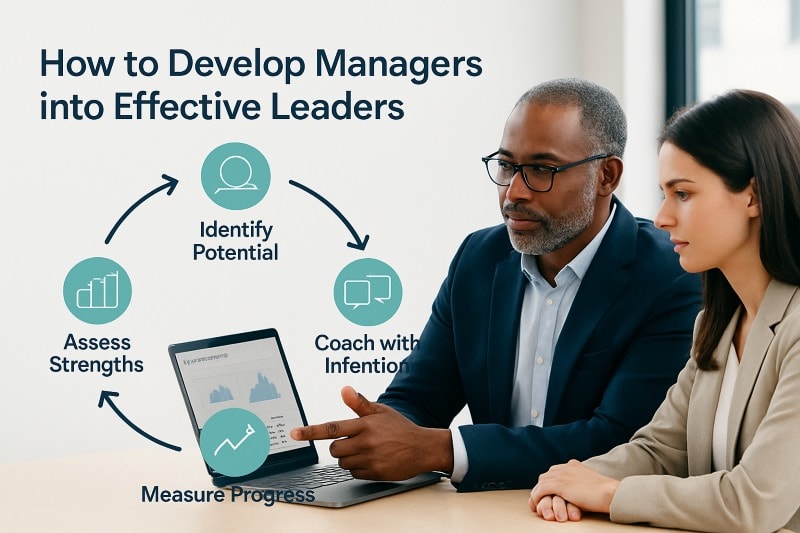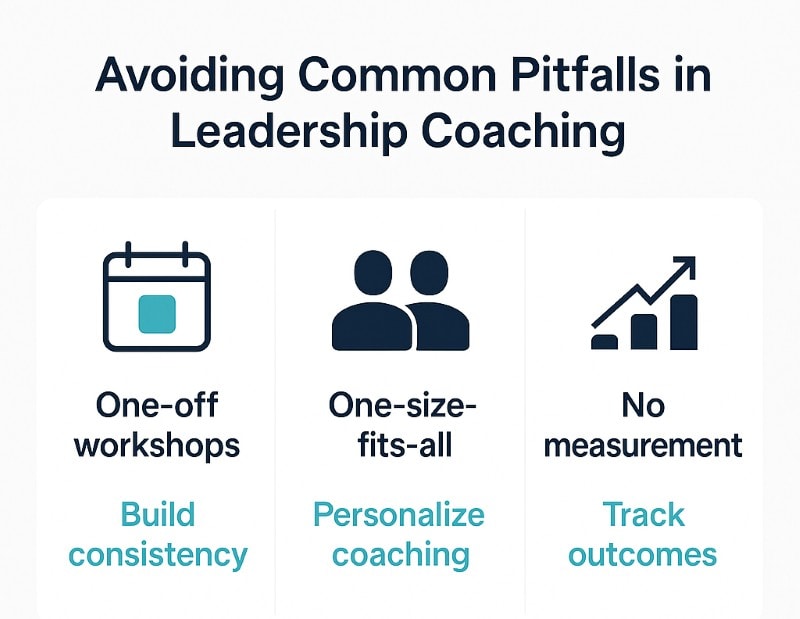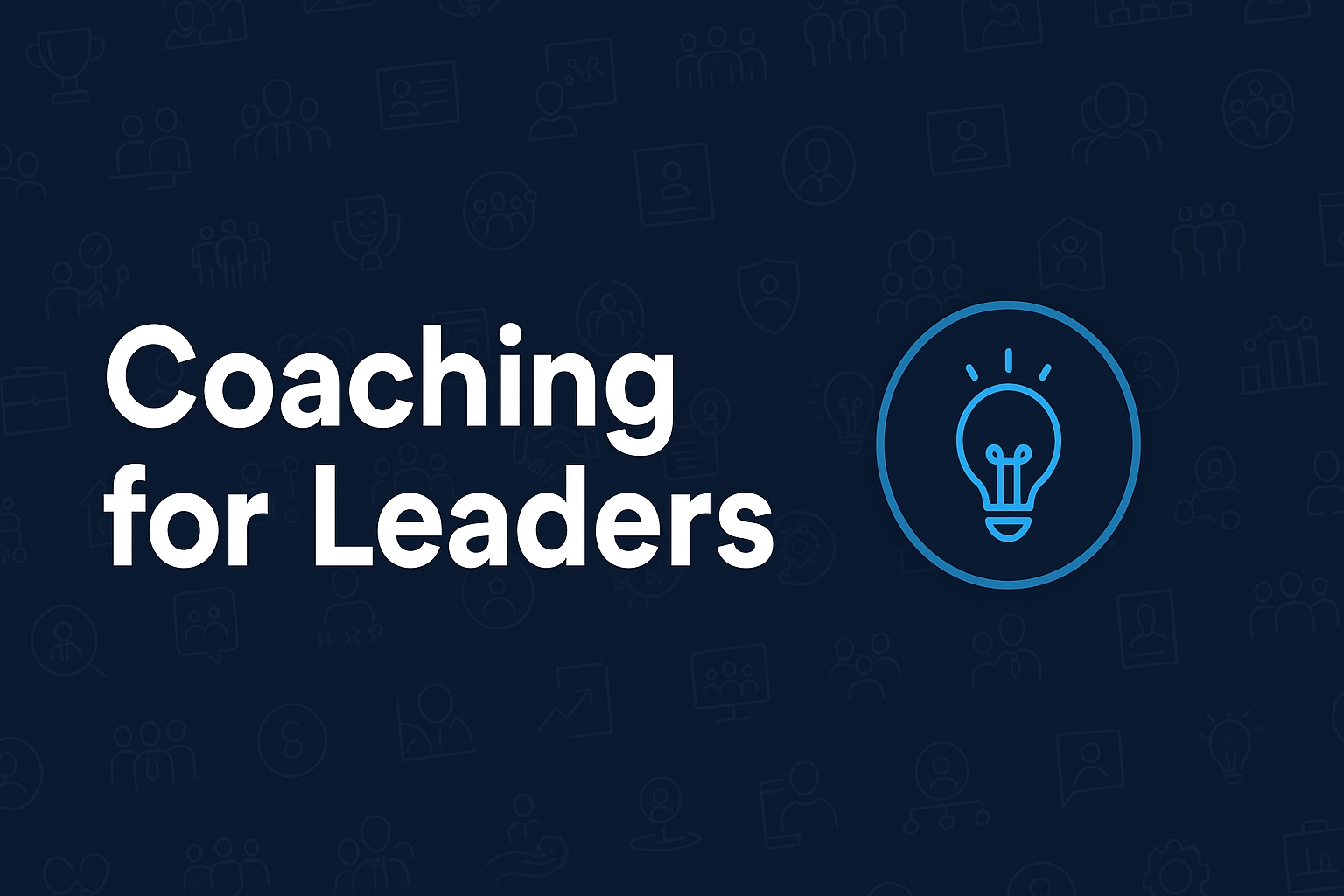Leaders aren’t born — they’re built. Coaching for leaders is the bridge between managing tasks and inspiring people, turning everyday managers into the kind of leaders who drive culture, retention, and growth. In today’s competitive market, organizations that neglect coaching don’t just risk stagnation — they risk losing their best people. Think of a top sales director who’s hitting every quota — but walks out after a year because her manager never invested in her growth. That’s the hidden cost of neglecting coaching.
At OAD, we don’t just talk about leadership coaching in theory — our assessments reveal exactly how a manager’s stress patterns or decision-making style will show up under pressure. Coaching then becomes laser-focused, not generic.
Table of Contents
- What Is Coaching For Leader?
- Why Leadership Coaching Matters More Than Ever
- Leaders Aren’t Born — They’re Made
- How to Develop Managers into Effective Leaders
- The Power of Insightful Conversations in Coaching
- Avoiding Common Pitfalls in Leadership Coaching
- How to Build a Coaching Culture in Your Organization
- The OAD Advantage: Data Meets Coaching
- Conclusion
What Is Coaching For Leader?
Coaching for leaders goes beyond teaching management skills. The myth that some people are simply natural leaders persists, but the truth is, leaders aren’t born. Leadership is a skill that can be developed through intentional effort and experience. It’s a structured process that helps leaders uncover their blind spots, sharpen decision-making, and elevate how they influence others. Unlike generic training programs, leadership coaching is personal, ongoing, and tied directly to business outcomes — it transforms managers into leaders who inspire action instead of just directing tasks.
At OAD, we see too many companies waste millions on classroom-style training that never sticks. Coaching works because it’s tied to real behavior change, not just theory.
In fact, many organizations have found that leadership engagement scores are the same or even worse than a decade ago, underscoring the need to learn from past trends and invest in effective leadership development. Leaders aren’t born, they’re made.

Why Leadership Coaching Matters More Than Ever

Strong leadership is one of the biggest multipliers in business performance. Research from Gallup shows managers account for up to 70% of the variance in employee engagement — meaning a single leader can raise or sink an entire team.
Gallup quantifies the risk. OAD makes it actionable — our assessments show exactly how a leader motivates, stresses, or communicates, so coaching starts from data instead of assumptions.
Imagine a manager whose team just lost a key client — coaching gives them the composure to steady morale, frame the setback as a lesson, and redirect the team’s energy toward the next win. In a market where talent retention and resilience determine competitiveness, leadership coaching is no longer optional — it’s mission critical.
Leaders Aren’t Born — They’re Made
The idea that leaders are born with a natural gift is one of the most persistent myths in business. In reality, effective leadership comes from continuous learning, practice, and feedback. From Dale Carnegie’s early work, especially his influential book on leadership, to the evolution of leadership at Dale Carnegie and modern leadership research by bestselling authors expert researchers, the evidence is clear: with the right coaching, managers can grow into leaders who inspire trust and deliver results.
Even Jeff Bezos has said he built Amazon through continuous learning and adaptation — not by being a ‘natural leader.’ Coaching taps into that same principle.This shift in mindset — from talent being innate to being developed — is what unlocks an organization’s true potential.

How to Develop Managers into Effective Leaders

Turning managers into leaders requires more than handing them a playbook — it demands a deliberate, structured approach. The process typically follows four key steps:
1. Identify potential. Not every strong performer is ready to lead. Use assessments and observation to find individuals with the right blend of ambition, adaptability, and emotional intelligence who show leadership qualities.
2. Assess strengths and blind spots. Science-backed tools, like OAD’s assessments, give organizations data on how a manager makes decisions, communicates, and responds under pressure. Without this insight, coaching risks being guesswork.
Without this, coaching turns into educated guesswork — and at OAD, we’ve seen countless leaders stall because no one pinpointed their blind spots early.
3. Coach with intention. Real leadership coaching isn’t about generic advice — it’s about targeted conversations that challenge thinking, stretch comfort zones, and build resilience. Great coaches create safe spaces for managers to test, reflect, and grow. Gaining new perspectives through coaching helps leaders see challenges and opportunities in different ways. Using tools like Plus Minus Next can help managers quickly reflect on what’s working, what isn’t, and what steps to take next in their leadership development.
4. Measure progress. Leadership development must be tied to outcomes. This means tracking changes in team performance, retention, and culture over time to ensure coaching translates into business impact and measuring what results are produced as a result of coaching.
When done well, this cycle doesn’t just produce competent managers — it produces leaders who inspire trust, align teams with strategy, and create environments where people thrive.

The Power of Insightful Conversations in Coaching
At the core of effective coaching for leaders are insightful conversations — the kind that move beyond surface-level advice and spark real growth. When leaders engage in open, honest dialogue, they create space for reflection, self-awareness, and meaningful change. Picture a CFO admitting in coaching that his direct reports are afraid to challenge him — that moment of honesty is what sparks real transformation.These conversations help uncover strengths, expose blind spots, and build the emotional intelligence required to navigate complex challenges.
One well-known example of this in practice is Dave Stachowiak’s Coaching for Leaders podcast. By drawing on the insights of bestselling authors, expert researchers, and his own leadership experience at Dale Carnegie, Stachowiak demonstrates how thoughtful dialogue can shape the way leaders think and act. With consistent exposure to diverse perspectives, leaders are better equipped to adapt, inspire, and guide their teams.

The takeaway is simple: coaching isn’t about handing down instructions — it’s about asking better questions and listening with intent. Whether in a formal coaching session, a team meeting, or a peer-to-peer exchange, insightful conversations cultivate trust and accelerate development. When paired with data-driven insights, they become one of the most powerful tools for building leaders who create lasting impact.
Avoiding Common Pitfalls in Leadership Coaching
Many leadership coaching initiatives fail because they focus on the wrong things. The most common mistakes found in these programs include:
- Relying on one-off workshops. A single seminar might spark inspiration, but without follow-up, the impact quickly fades.
- Using a one-size-fits-all approach. Every leader has different strengths and blind spots. Coaching that isn’t personalized misses the mark.
- Failing to measure results. Without clear metrics, organizations can’t know whether coaching is improving decision-making, engagement, or retention.

It can be hard to avoid these common mistakes, especially given the variety of challenges found in leadership coaching initiatives.
Avoiding these traps requires consistency, personalization, and accountability. Effective coaching doesn’t end at the classroom door — it becomes part of the daily rhythm of leadership.
How to Build a Coaching Culture in Your Organization
Think of coaching like physical training — a single workout won’t transform you, but daily habits compound into lasting strength. Leadership works the same way. Building a coaching culture starts at the top: when executives model curiosity, feedback, and openness, it signals that development is valued at every level. Think of Satya Nadella at Microsoft — his shift to a culture of curiosity and growth mindset cascaded through the entire organization. Leaders who show up as role models in a coaching culture demonstrate the behaviors and mindset they want to see throughout the organization.
Practical steps include encouraging weekly coaching conversations between managers and their teams, integrating coaching goals into performance reviews, and training leaders to coach each other. Leaders are also encouraged to independently initiate coaching conversations and pursue their own development, setting an example for others to follow. Over time, this creates an environment where growth is expected, feedback flows naturally, and leadership isn’t a role — it’s a shared responsibility.

The OAD Advantage: Data Meets Coaching
What sets effective coaching apart is precision. Without data, even the best coaches are working with assumptions. OAD’s scientifically validated assessments remove the guesswork by showing exactly how leaders think, communicate, and respond under pressure. Understanding a leader’s mind is crucial in data-driven coaching, as it fosters better decision-making, self-awareness, and mental resilience.
Leaders can read their assessment results to gain valuable insights into their strengths and areas for growth. When combined with coaching, these insights create a powerful development cycle: coaches know where to focus, leaders see measurable progress, and organizations gain leaders who are aligned with business goals. OAD assessments and coaching can address a wide range of topics, ensuring that development is relevant and comprehensive. It’s this blend of data and coaching that transforms leadership from a hopeful investment into a proven strategy for growth.

Conclusion
Some leaders are born with charisma — but charisma alone doesn’t retain top talent or make sound decisions under pressure. Coaching bridges that gap. Coaching gives managers the tools to move beyond managing tasks and start inspiring people. When backed by data-driven insights, coaching becomes more than a professional perk — it becomes the engine that drives engagement, retention, and long-term growth.
Organizations that commit to developing their leaders today won’t just survive tomorrow’s challenges — they’ll thrive because they’ve built leadership into their foundation.
At OAD, we believe the companies that win the next decade won’t be the ones with the biggest budgets — but the ones that invest in building leaders who inspire loyalty and resilience.
Want to see how science-backed coaching can transform your leadership pipeline?
Test OAD for free today

